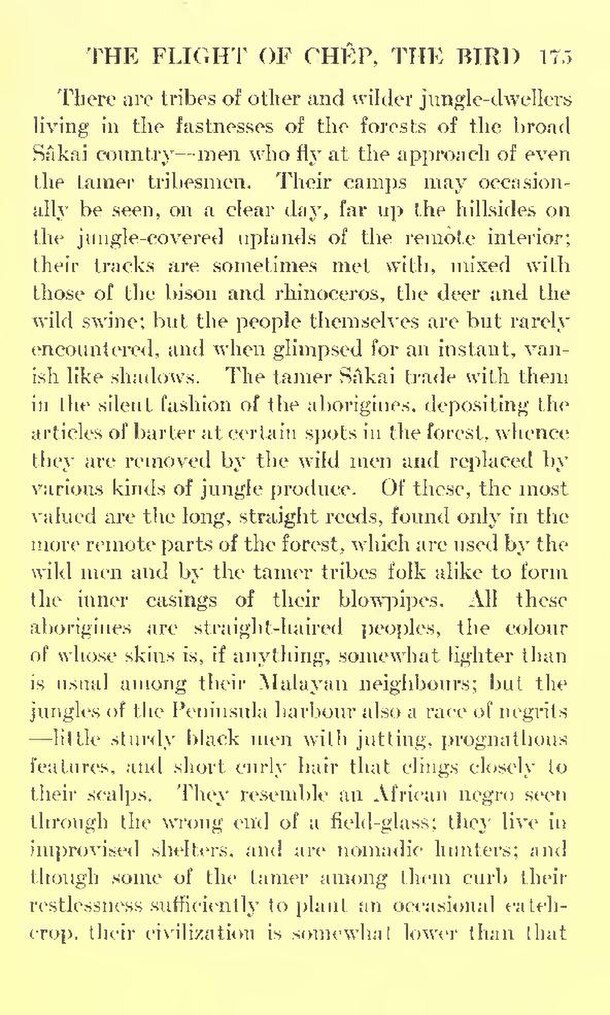There are tribes of other and wilder jungle-dwellers living in the fastnesses of the forests of the broad Sakai country--men who fly at the approach of even the lamer tribesmen. Their camps may occasion- ally be seen, on a clear day, far up the hillsides on the jungle-covered uplands of the remote interior; their tracks are sometimes met with, mixed with those of the bison and rhinoceros, the deer and the wild swine; but the people themselves are but rarely encountered, and when glimpsed for an instant, van- ish like shadows. The tamer Sakai trade with them in the silent fashion of the aborigines, depositing the articles of barter at certain spots in the forest, whence they are removed by the wild men and replaced by various kinds of jungle produce. Of these, the inost valued are the long, straight reeds, found only in the more remote parts of the forest, which are used by the will men and by the tamer tribes folk alike to form the inner casings of their blowpipes. All these aborigines are straight-haired peoples, the colour of whose skins is, if anything, somewhat fighter than is usual among their Malayan neighbours; but the jungles of the Peninsula harbour also a race of negrits -little sturdy black men with jutting, prognathous features, and short curly hair that clings closely to their scalps. They resemble an African negro seen through the wrong end of a field-glass; they live in improvised shelters, and are nomadic hunters; and through some of the tamer among them curb their restlessness sufficiently to plant an occasional eateh- crop. their civilization is somewhat lower than that
Page:The further side of silence (IA furthersideofsil00clifiala).pdf/197
This page needs to be proofread.
